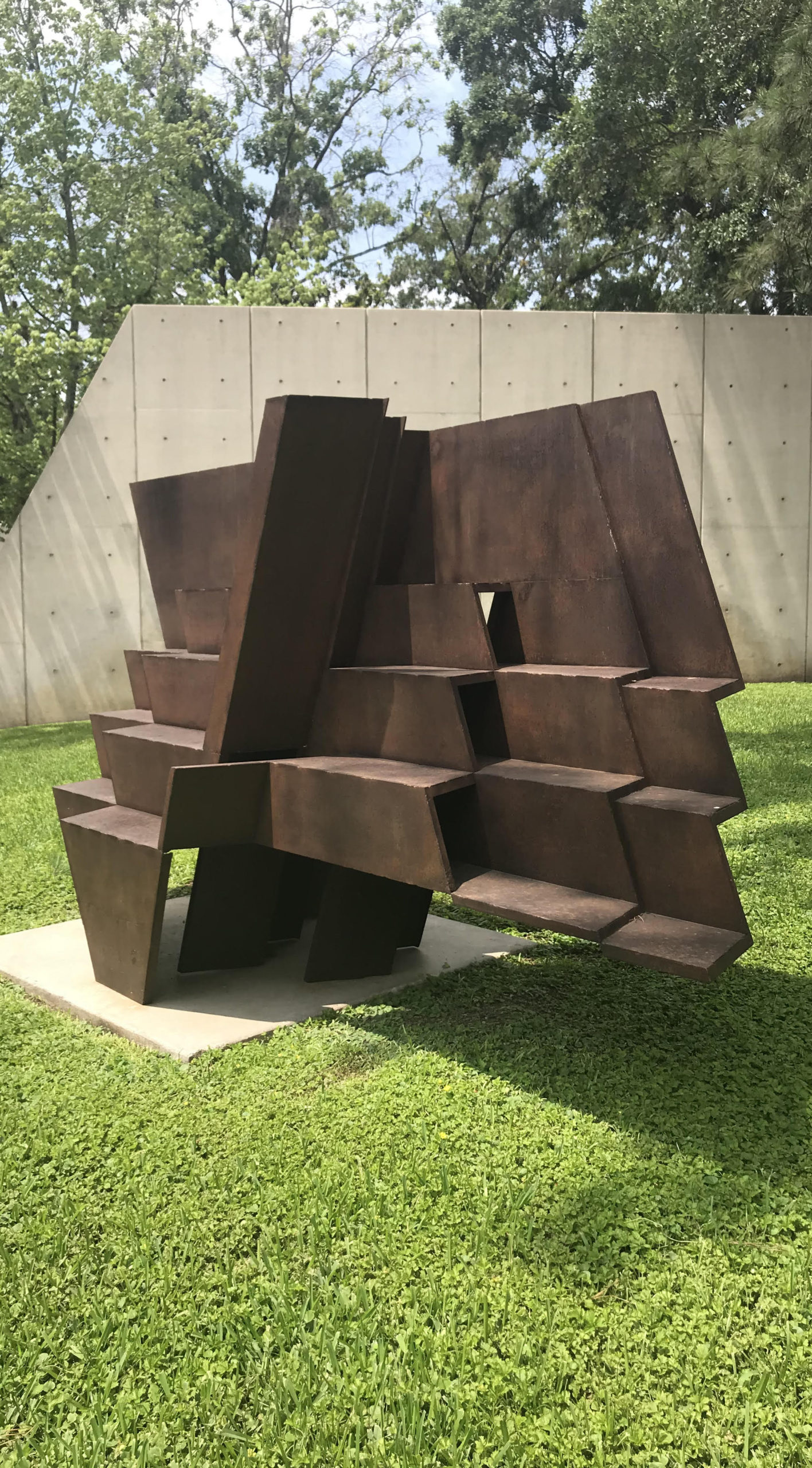
When Columbian constructivist sculptor Eduardo Ramirez Villamizar visited Machu Picchu he stayed for three days and three nights — studying and experiencing the structures in different lighting conditions. He was 60 years old when he made the trip and regretted not travelling there sooner —the encounter was life changing. While there, he did not take any notes or make sketches. Rather, he simply soaked in the beauty of the site. Five months after his trip he spontaneously started creating works that reminded him of the places he encountered in the ancient city. “I began to imagine that one of my sculptures appeared … integrating itself into the old architecture … I felt that the pre-Columbian gods accepted it.” The work shown here is one of those sculptures, entitled Memory of Machu Picchu 3.
Villamizar studied architecture in Bogota for four years before changing his focus to painting and eventually gravitating toward sculpture. The work inspired by Machu Picchu is clearly reminiscent of the polygonal ashlars in Inca architecture. Interestingly, this piece has a clear front, similar to buildings, which often have a dominant or front façade. Villamizar uses forceful geometries that he sees reflected in nature. The idea that “geometry is nature” is a foundational concept in all his work. He considers himself a constructivist who is fundamentally optimistic, perhaps utopian. He therefore does not want to merely imitate the past but invent new worlds. To develop new mysteries that even surprise himself. The creative process for Villamizar ends when words are no longer helpful and what remains is the viewer’s sensibilities and silence.
